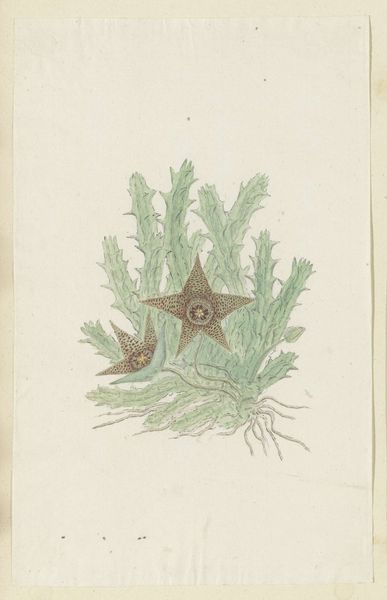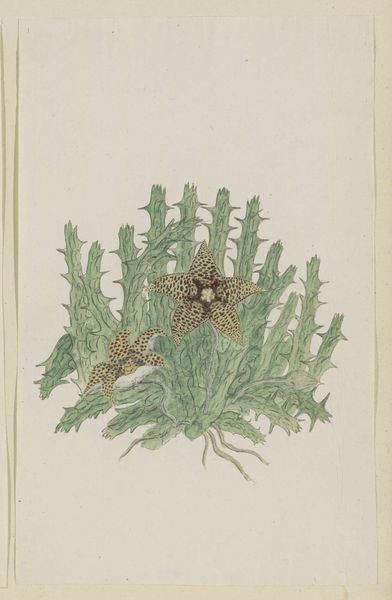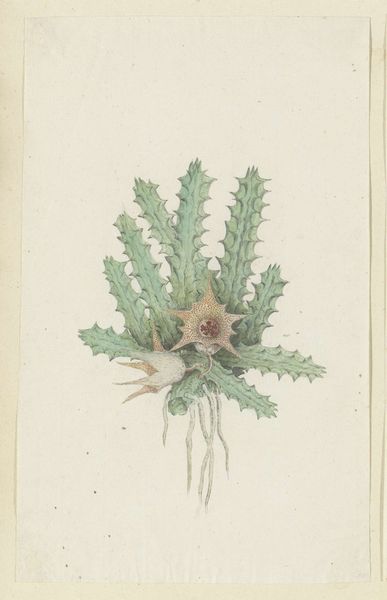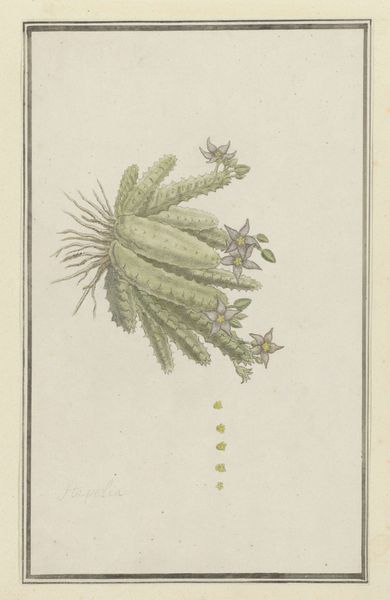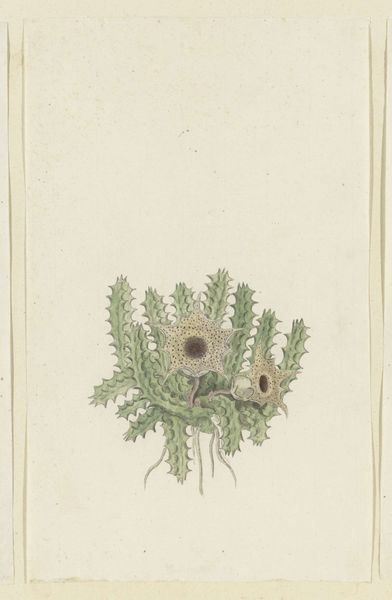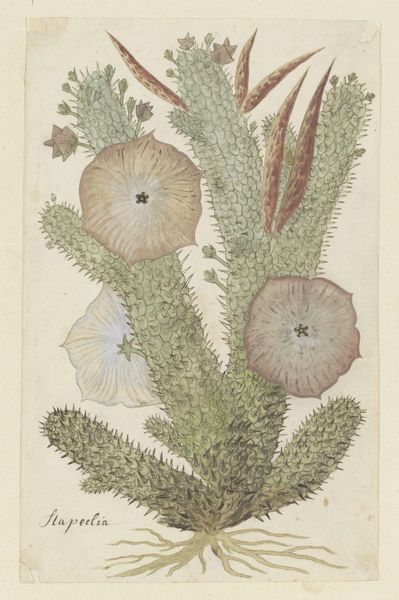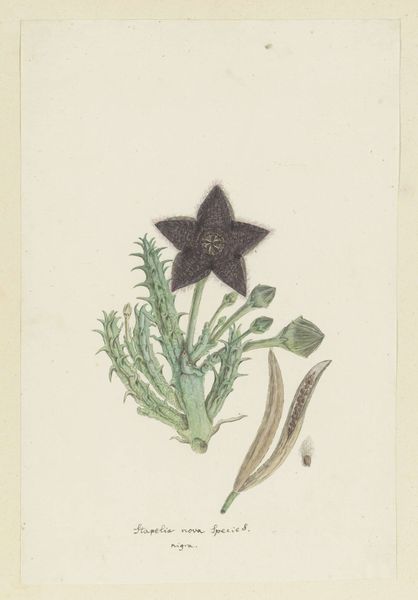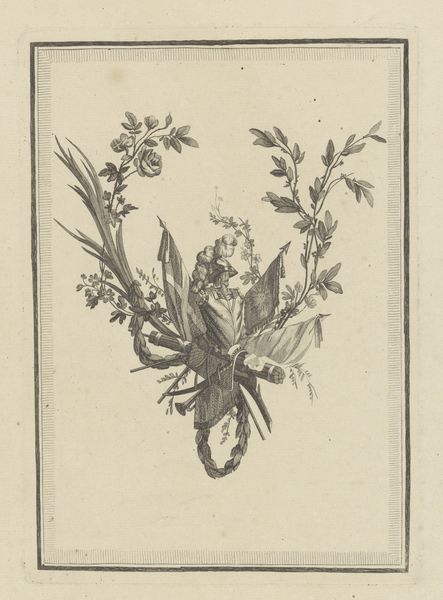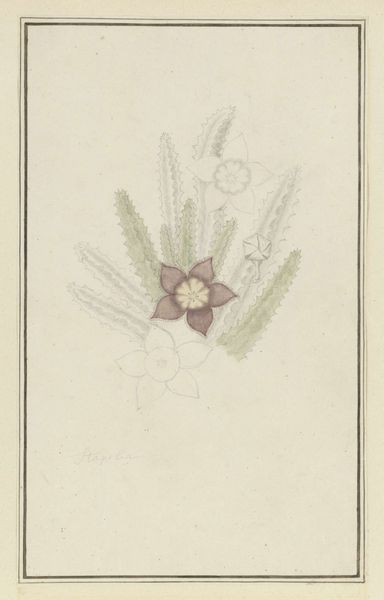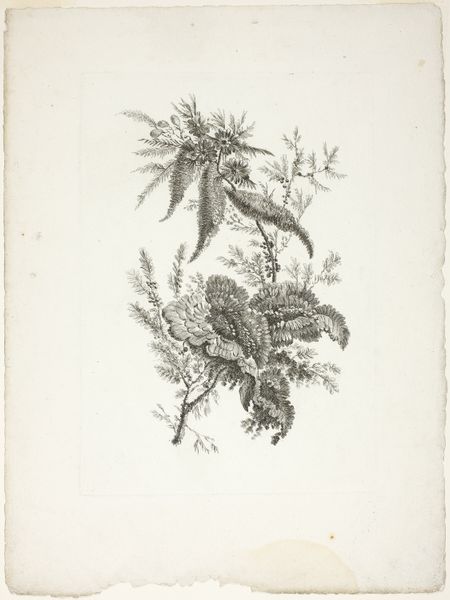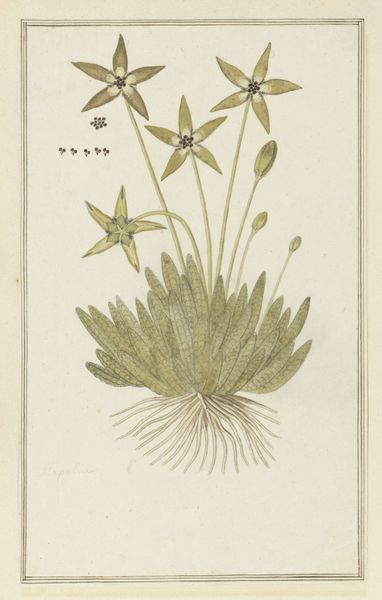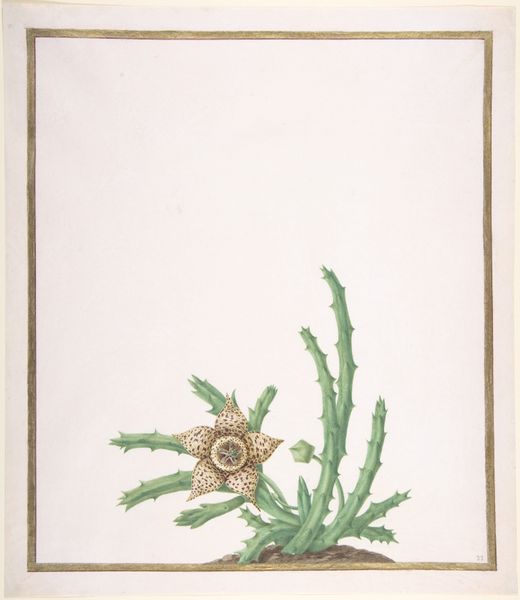
Dimensions: height 660 mm, width 480 mm, height 325 mm, width 203 mm, height mm, width mm
Copyright: Rijks Museum: Open Domain
Editor: This is a drawing of the Huernia namaquensis, or Namaqua carrion-flower, by Robert Jacob Gordon, made sometime between 1777 and 1786, using pencil and watercolor. It has such a delicate quality. What stands out to you about this botanical illustration? Curator: The labor involved in creating this image strikes me. Think about the conditions: the artist venturing into Namaqualand, the meticulous observation, and the precise hand required to render such detail using available materials. Editor: Right. I hadn't considered the actual *making* of the piece so deeply. Curator: Exactly. Watercolor and pencil on paper were commodities, expressions of colonial power, and influenced by material availability. Consider also, why render the carrion-flower so realistically? Was it simply scientific documentation, or was there also an aesthetic purpose driving the selection and portrayal? How does that tension shift our interpretation of it today? Editor: So, not just a pretty picture, but a record of a place, and a resource, made with specific materials during a particular moment in time. I never thought about Romanticism through that lens before, seeing it less about beauty and more about… material conditions. Curator: Precisely! The romantic lens shapes the art, while the means to acquire material shapes its creation, dictating the experience for both the artist and audience. Editor: Thinking about it that way makes me realize how intertwined art, labor, and colonialism really are. It definitely provides a different point of view! Curator: Absolutely! Examining materiality provides powerful ways to read beyond surface appearances.
Comments
No comments
Be the first to comment and join the conversation on the ultimate creative platform.
